Preparation for Playing in the Classroom
Instrument Sizing, Chairs, and Fingernails
501
PREPARATION FOR PLAYING IN THE CLASSROOM
Clip Title:
|
Preparation for Playing in the Classroom |
|
Description: |
Instrument Sizing, Chairs, and Fingernails |
|
Channel: |
501 |
|
Duration: |
7'16" |
Proper Instrument Sizing
All Instruments |
||
|
||
Violin / Viola |
Cello |
Double Bass |
|
|
|
Before the students arrive for the first lesson, teachers need to check that the instruments are properly sized for each individual student. It is always better to err on the side of too small rather than too large.
Violin and viola students should be able to extend their left hand around the scroll of the instrument without hyper-extending the elbow. The bow should be able to reach near the tip and remain parallel to the bridge without hyper-extension of the right arm. For students with short arms that are still growing, using a smaller bow with a larger instrument is a suitable compromise during the “in-between” stages.
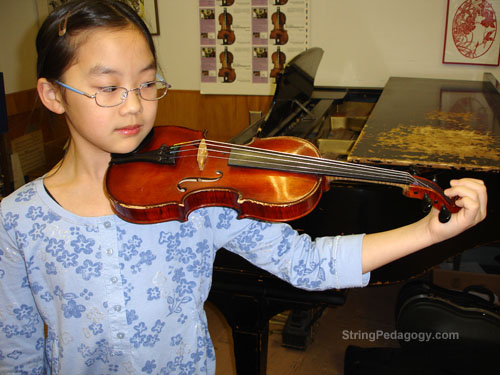
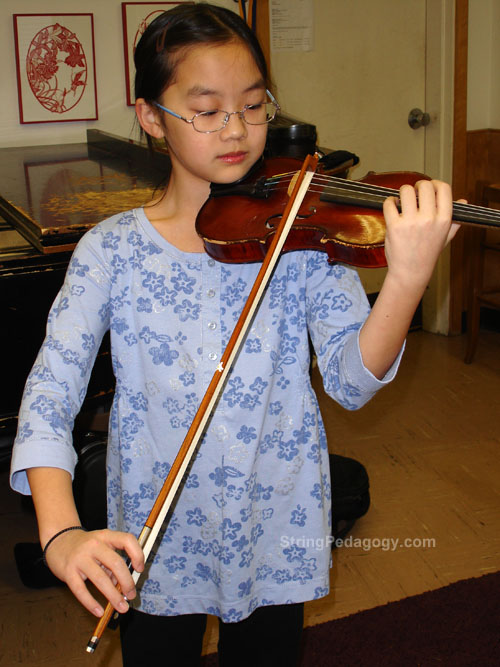
For proper cello sizing, the teacher adjusts the length of the endpin allowing the scroll to be at mouth to nose level with the student standing. Have the student sit and finger an interval of a minor third in first position (1st finger to 4th finger) making sure it is a comfortable reach.
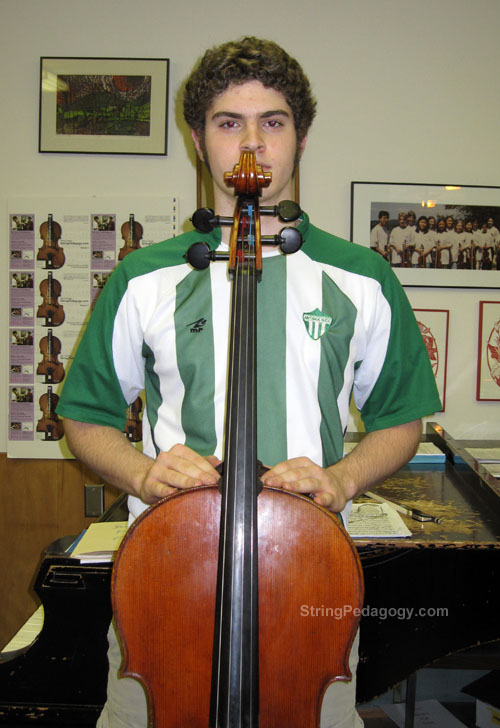
The double bass is adjusted allowing the nut to be adjacent to the top of the student’s forehead when standing. The student’s left hand must be comfortable playing a major second between the 1st and 4th fingers in the first position.
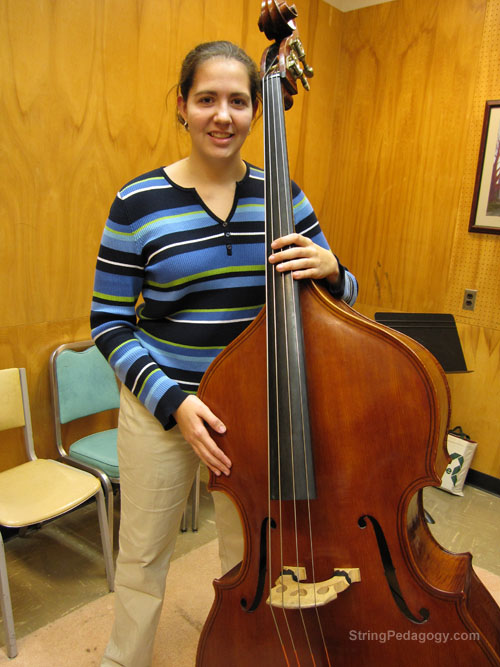
Chairs - Correct Size and Angle
In addition to proper sizing of the instruments, chairs for the children should be correctly sized and angled. Flat chairs, or chairs that enable the student to sit on the edge of the chair, are preferable to chairs that encourage students to slouch with their backs touching the chair back. For shorter students, especially cellists, use undersized chairs. Chair height is correct when feet can rest flat on the floor.
Fingernails
All students are strongly encouraged to have their fingernails on the left hand trimmed to a short length. Proper positioning of the left hand is complicated enough without having to adjust to long fingernails! Right hand fingernails should also be trimmed, especially the thumb nail. (A finger nail clipper is a teacher necessity item.)
Playable Instrument Condition
To save classroom time and frustration, check that the instruments are well set-up. To get students off to a good start, look for the following:
All Instruments |
|
|
|
Violin / Viola
|
Cello / Double Bass |
|
|
Instruments should be strung with quality strings (less than a year old) with four tuners on the tailpiece. Pegs should be in working order, not slipping or sticking. (To keep strings from slipping, check that the top two strings are wound towards the right side of the peg box, and the lower two strings are wound towards the left side of the peg box. Peg dope can be used for sticky or loose pegs. If in a crunch situation, graphite from a soft pencil will release tension and blackboard white chalk will add tension to pegs.)
Violins and violas must have comfortable chin rests. There are many models of chin rests, and time spent searching for the most comfortable chin rest for each individual student is time well spent. Violins and violas can be fitted with a simple shoulder rest consisting of a sponge and rubber band which keeps the instruments from slipping and adds support. Large sponge pieces in different widths are obtainable from a fabric or craft store and can be cut by the teacher into the appropriate sizes.
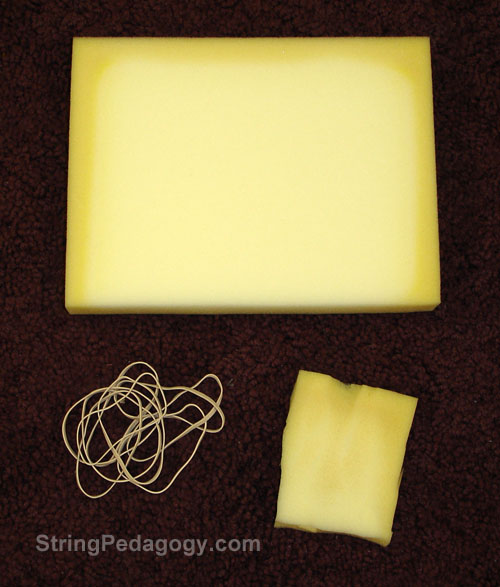
It is necessary for cellists and double bassists to have suitable rock stops.
All bows must have the capacity to change the tension of the hair and come with quality hair that holds rosin.